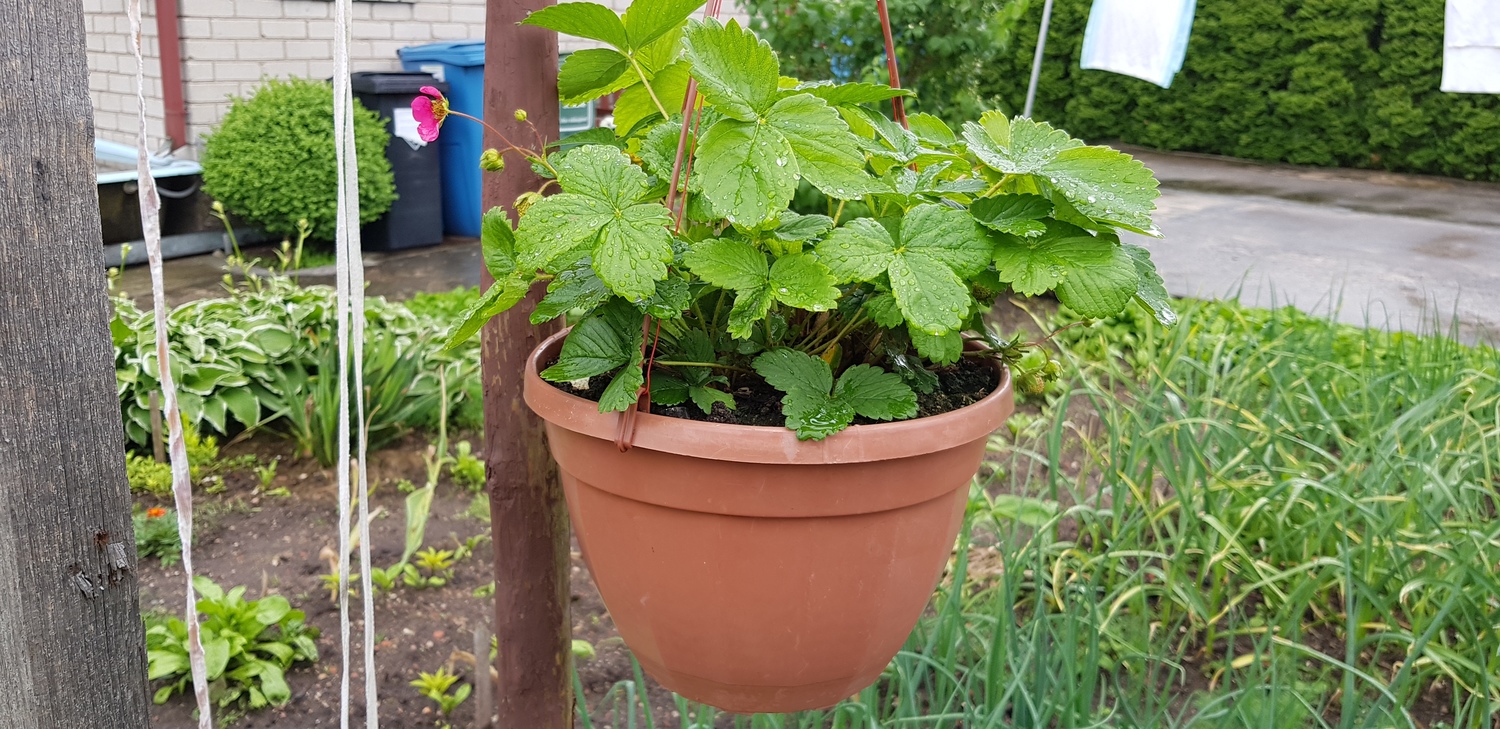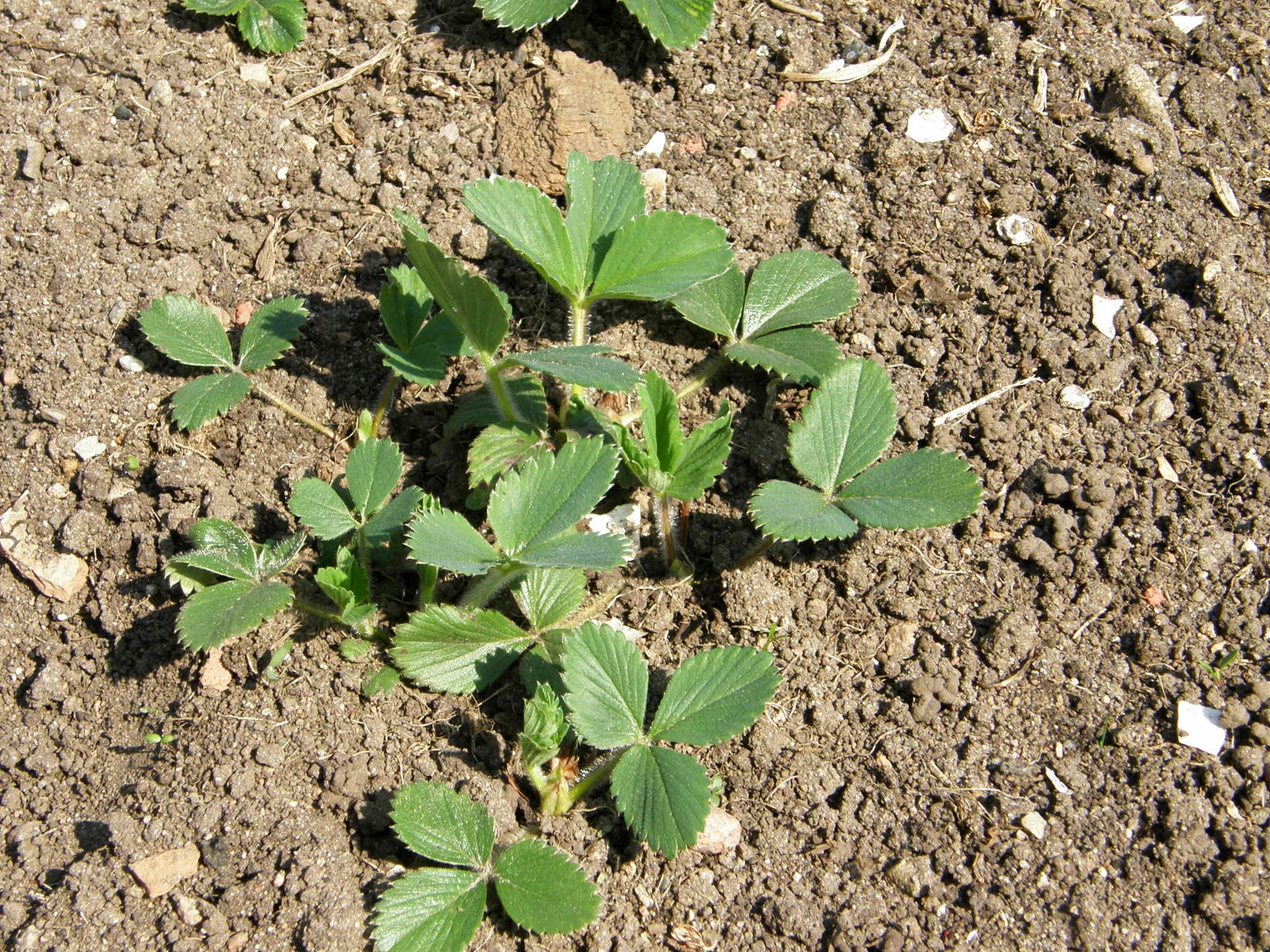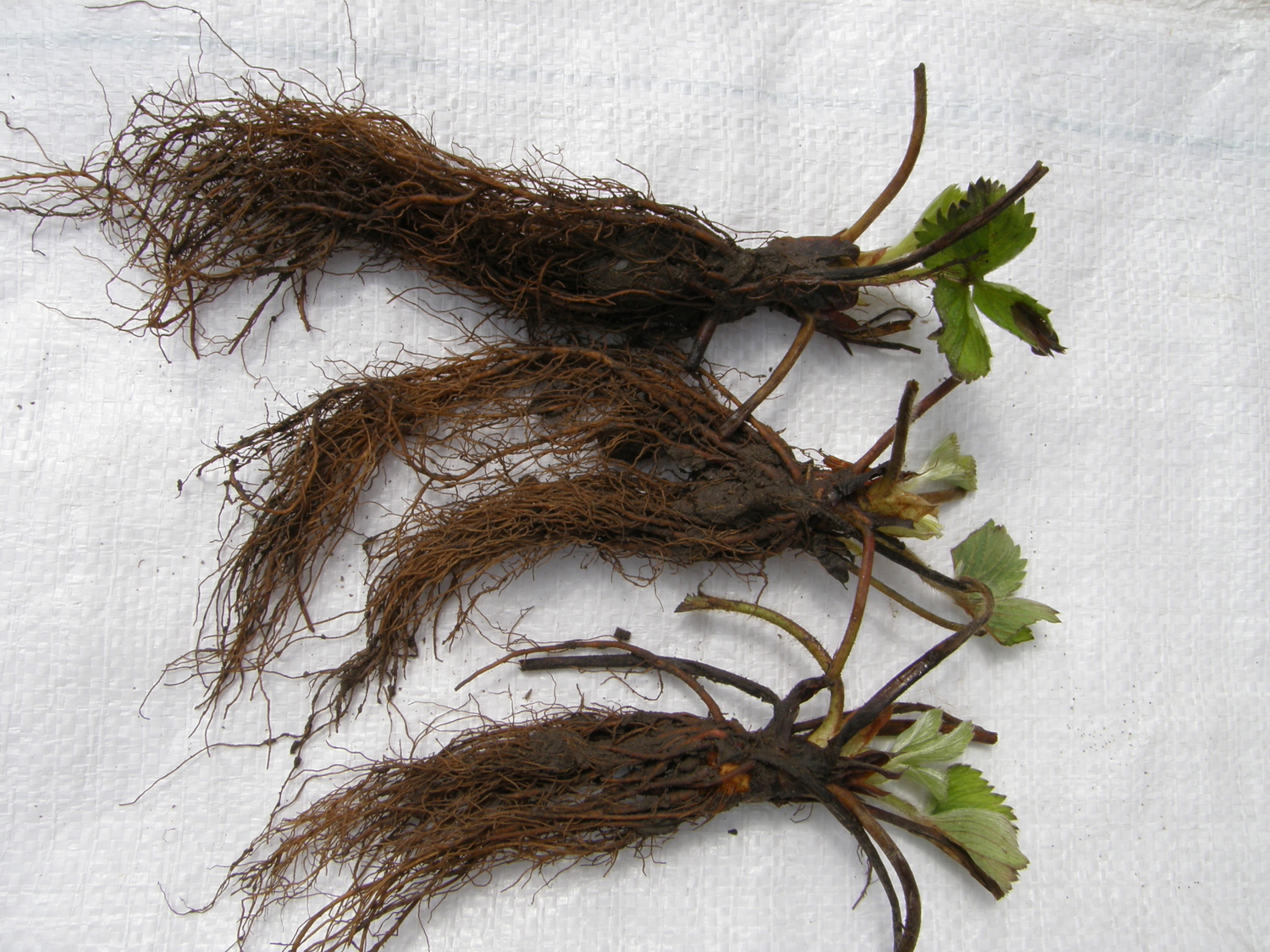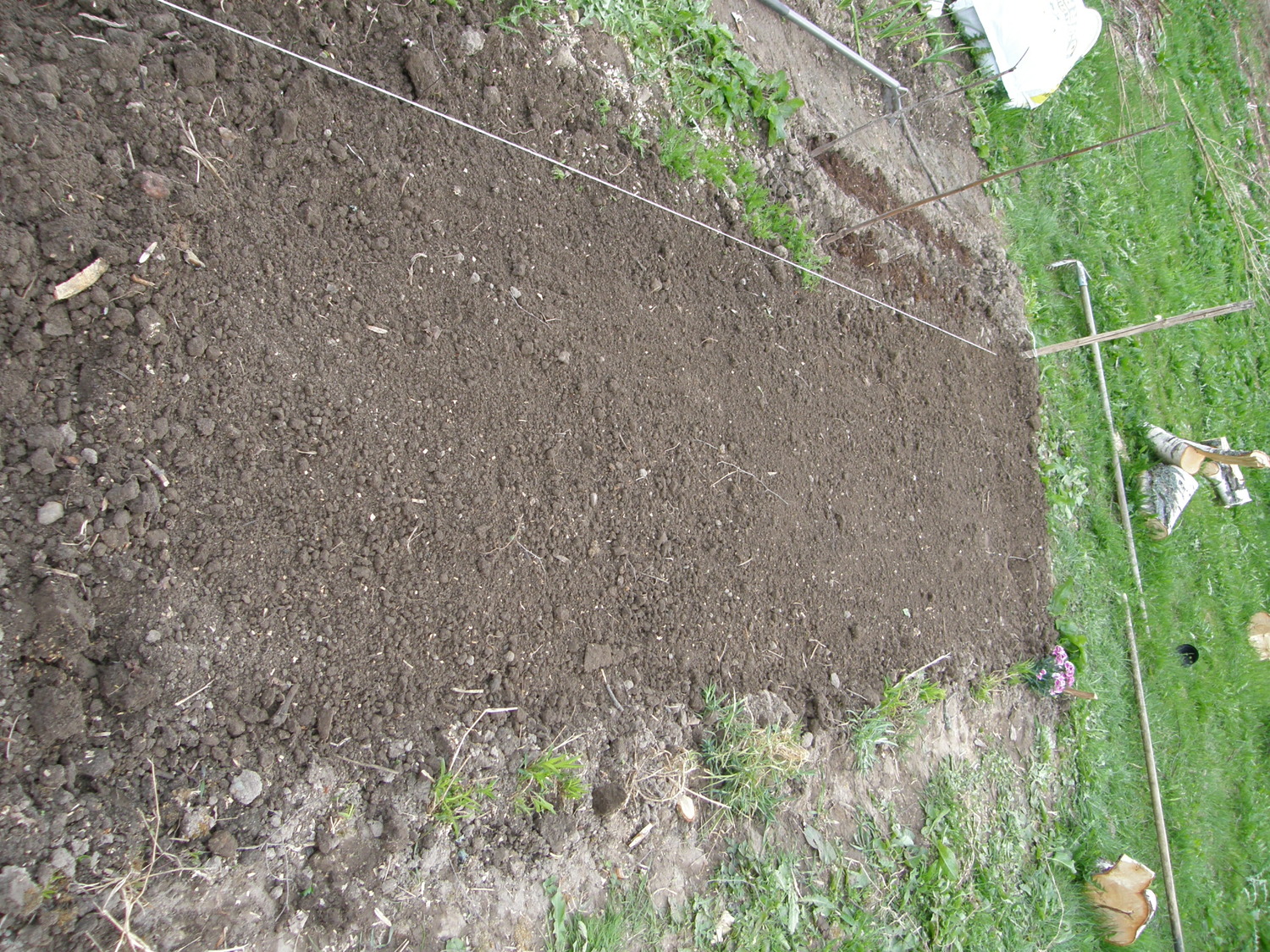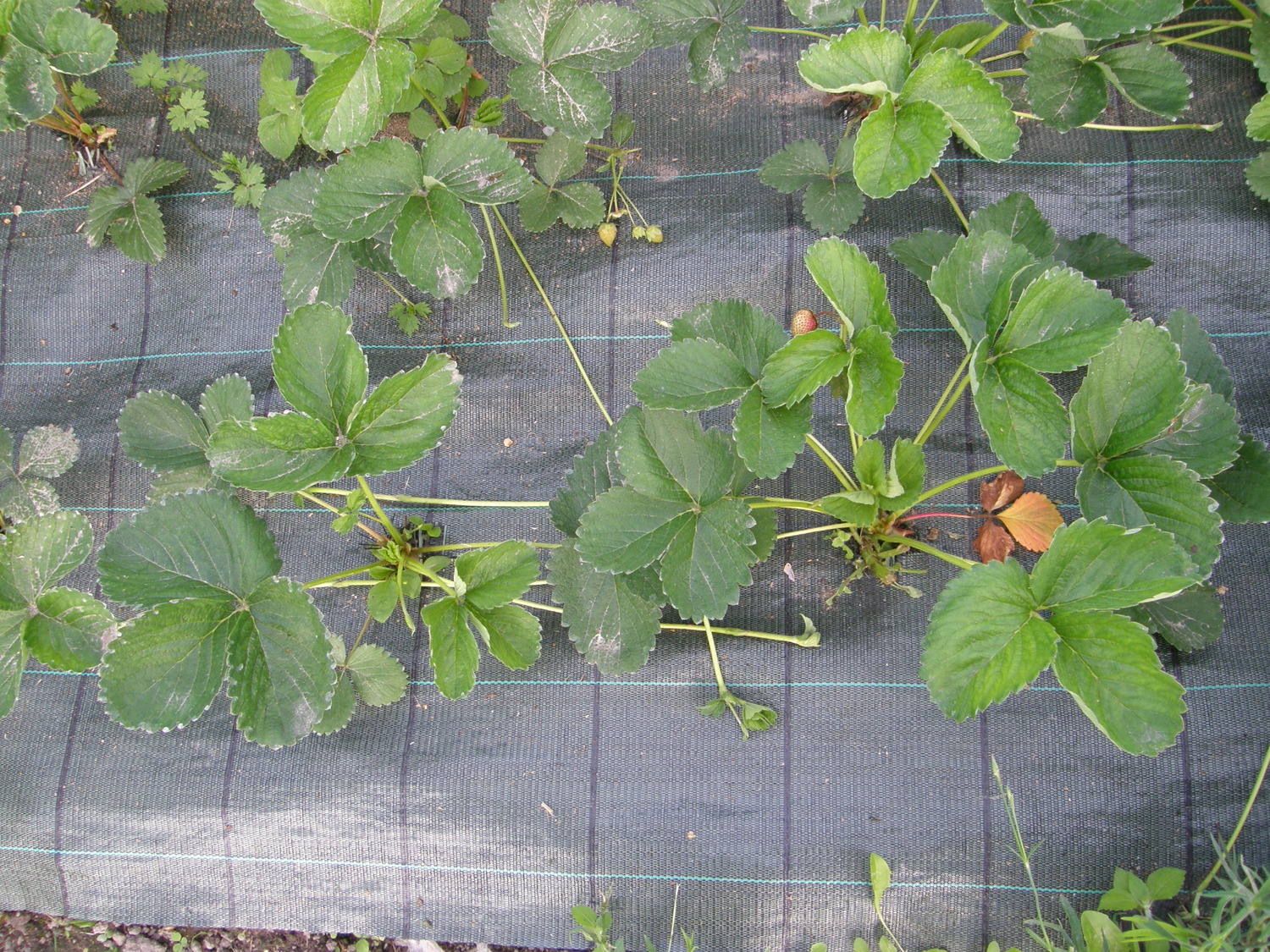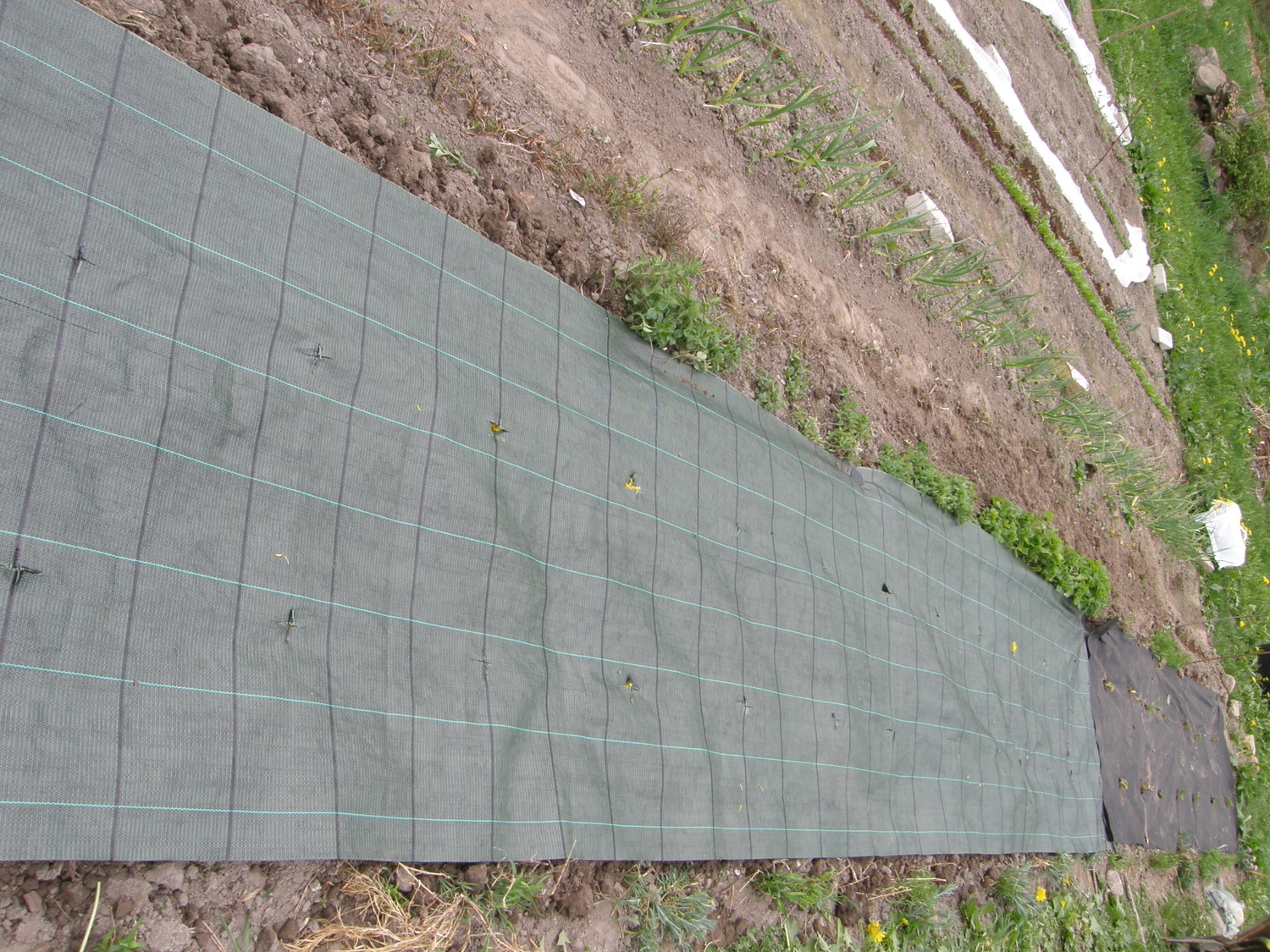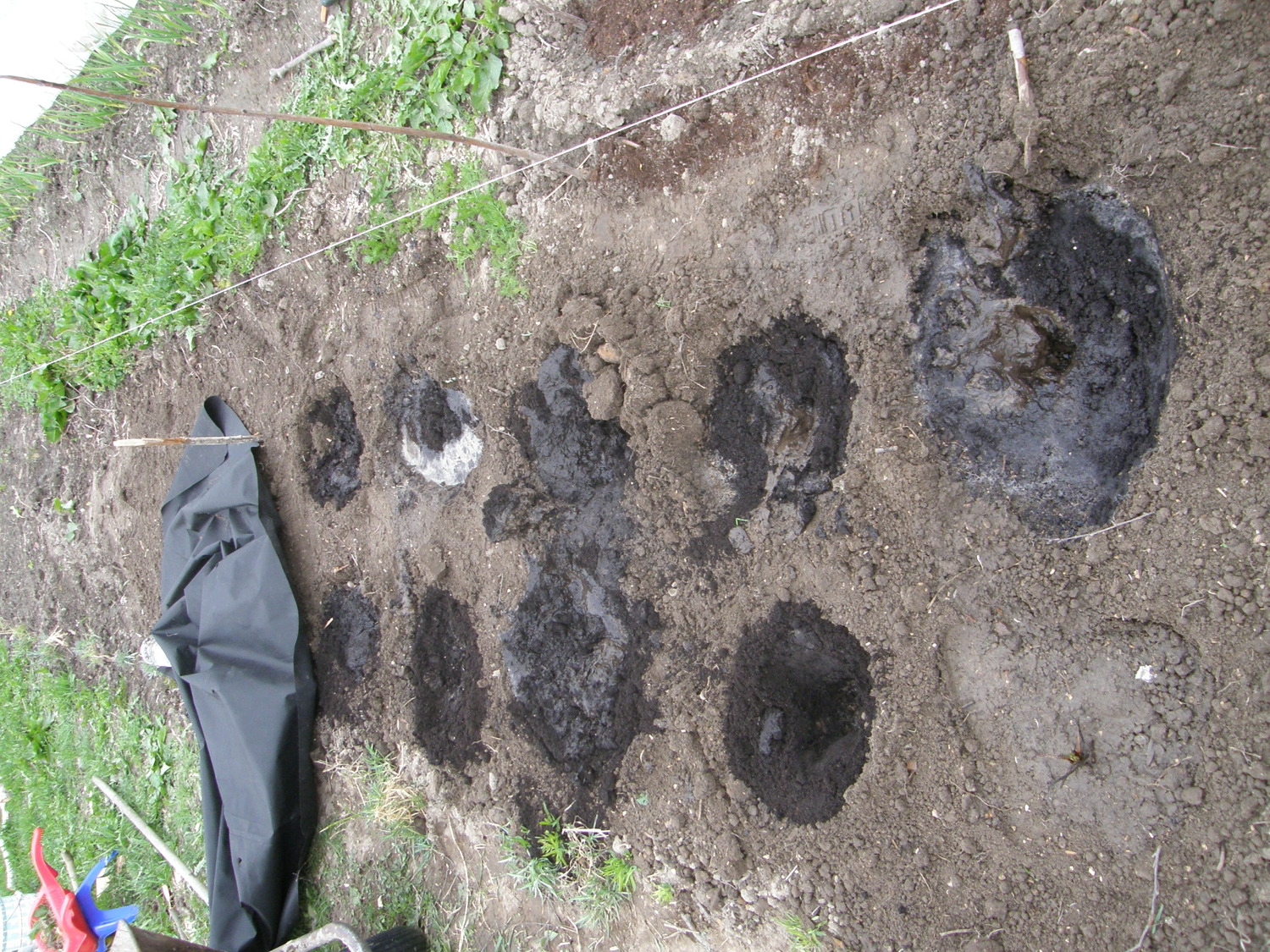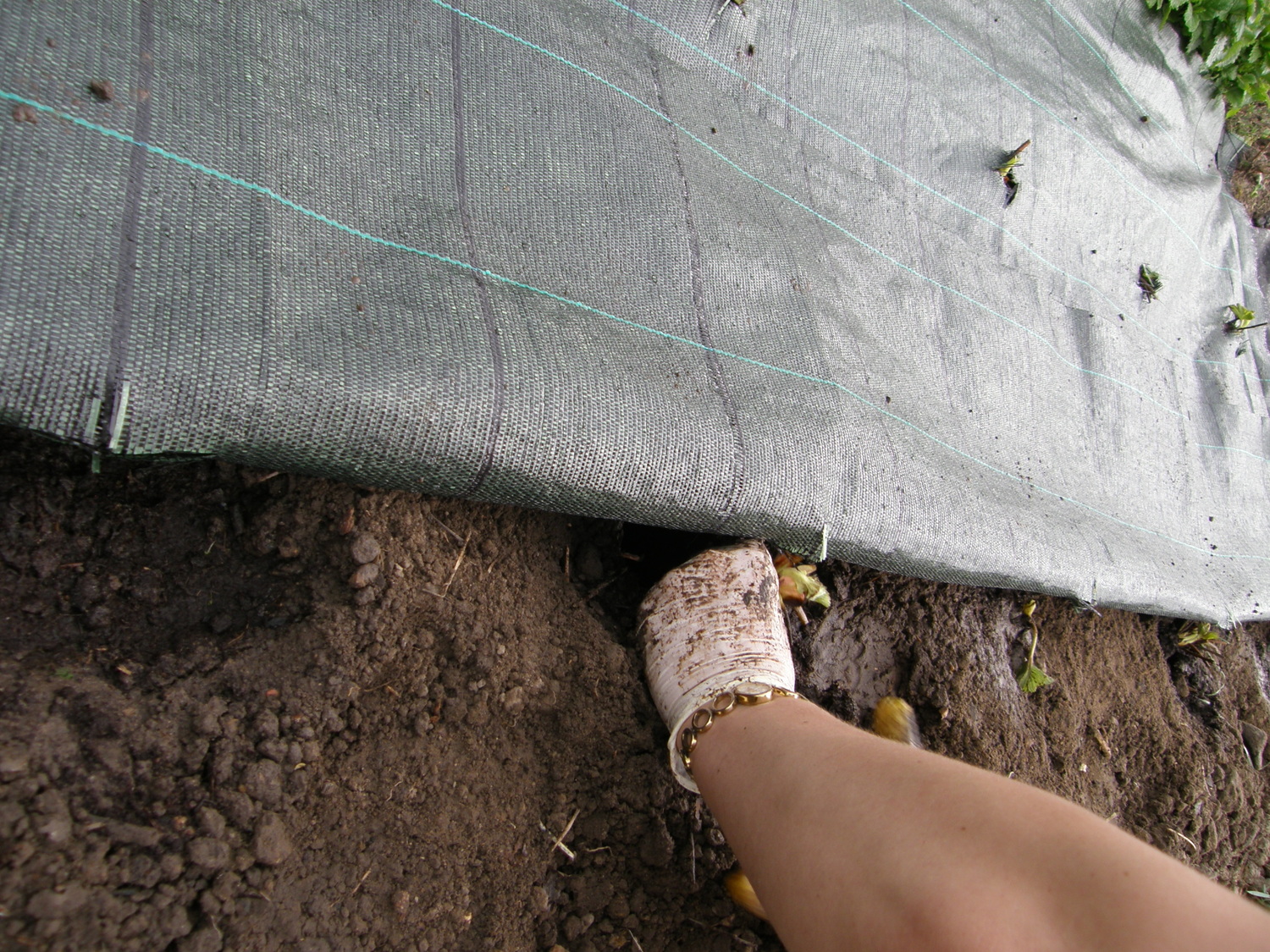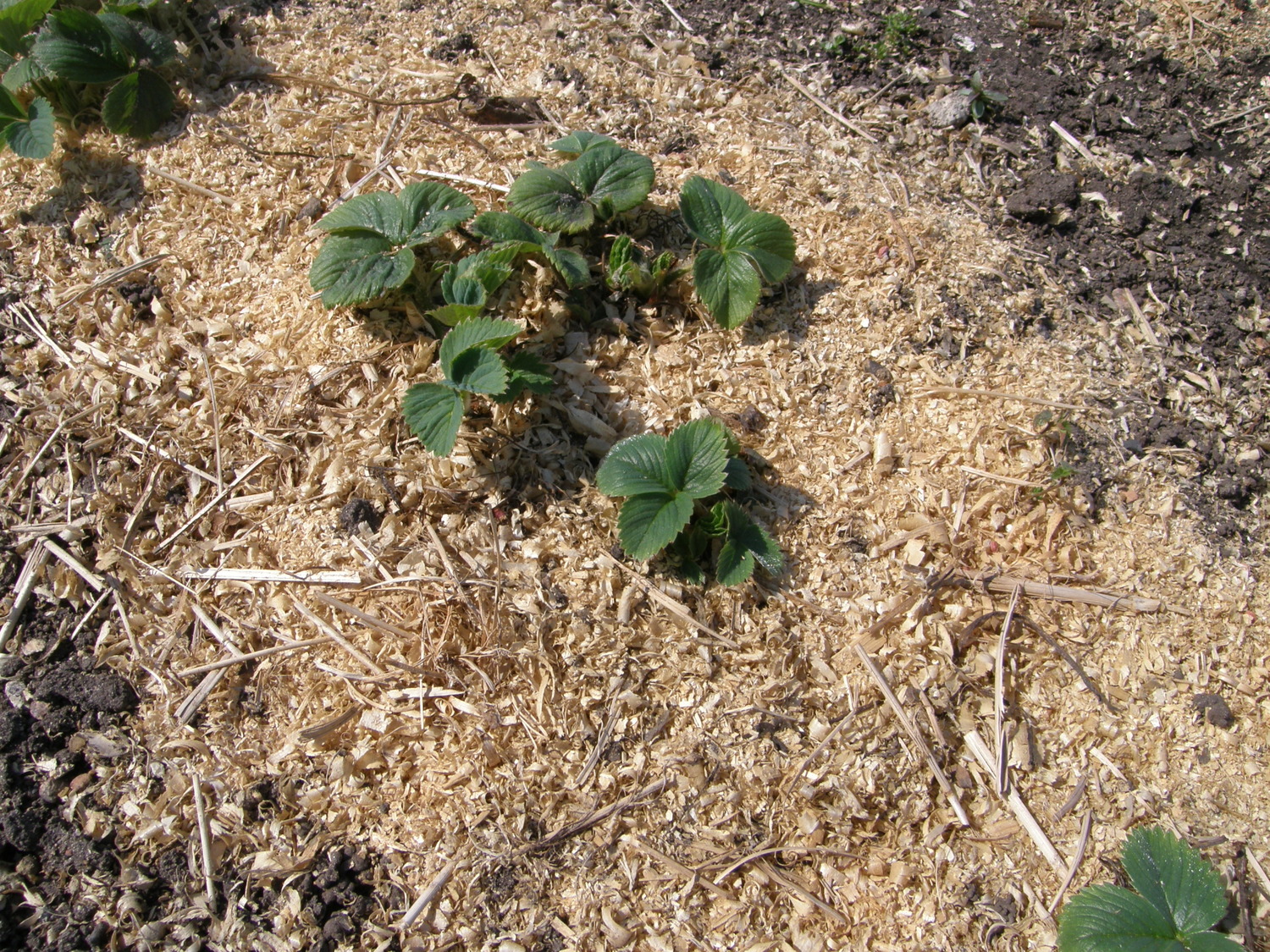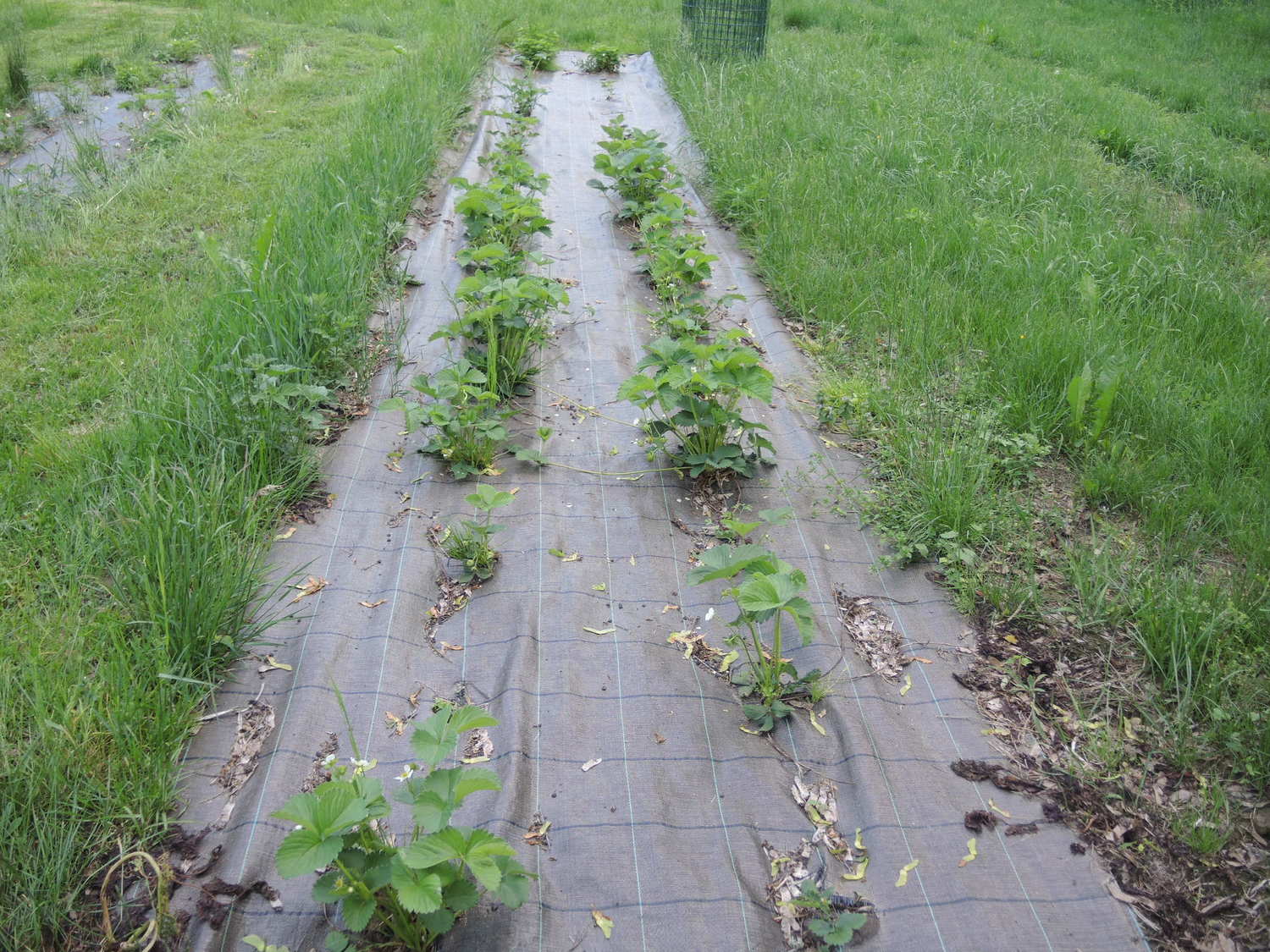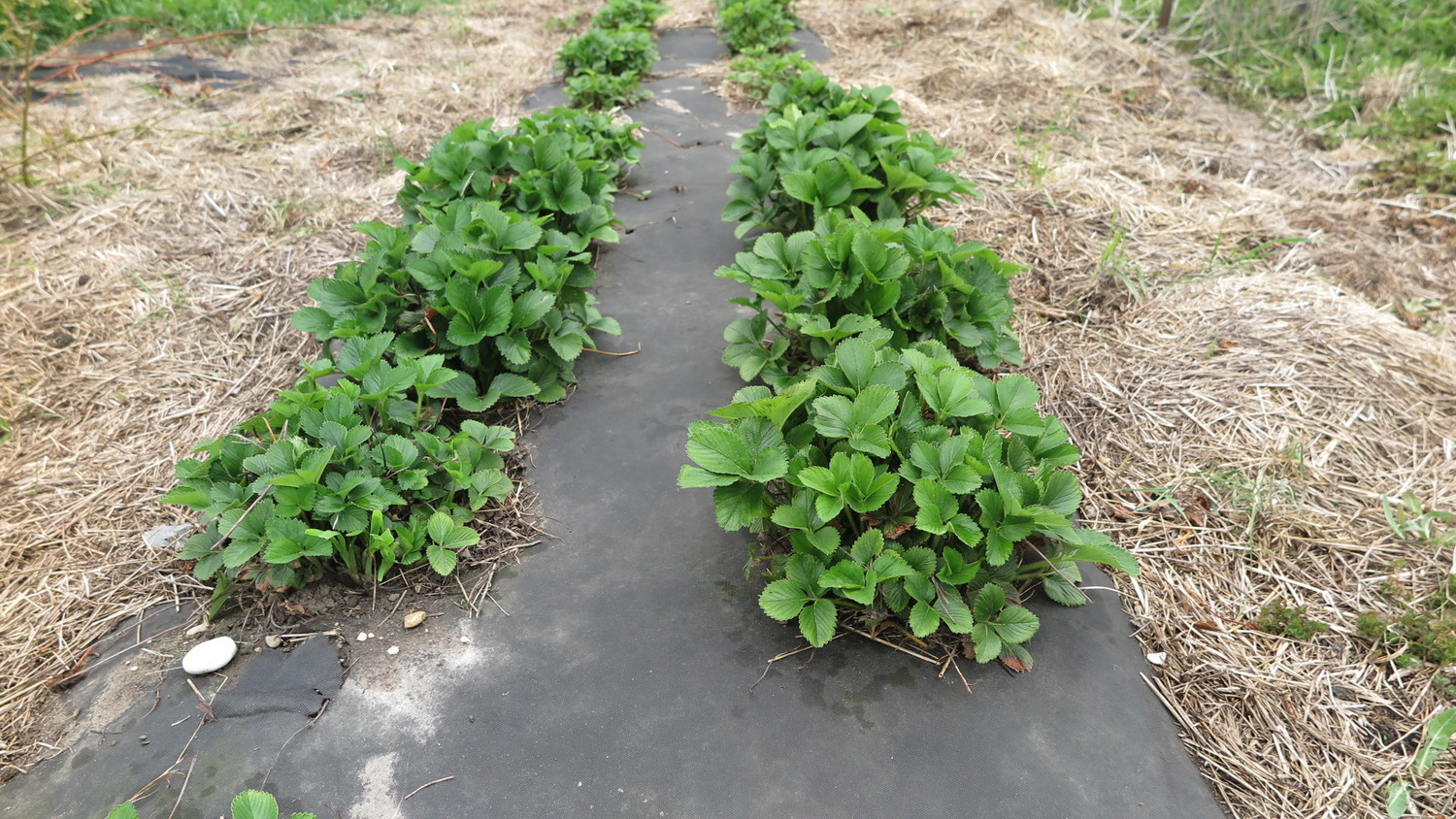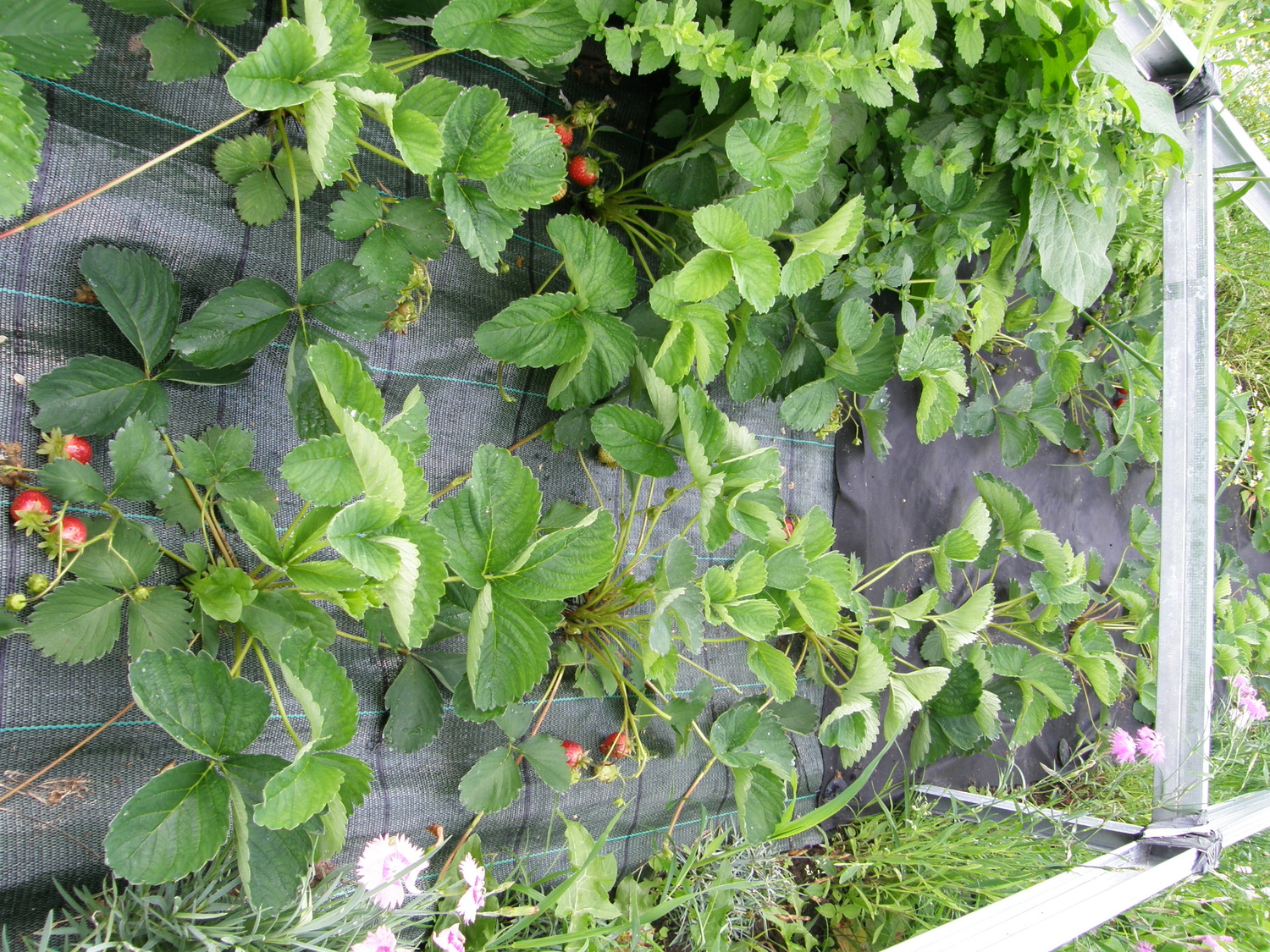Strawberries are nutritious, low-calorie berries that offer numerous health benefits. They strengthen the immune system, improve digestion, and positively affect skin health. Strawberries are easily digestible, making them perfect as a snack or as an addition to salads and desserts. Due to their fresh taste and sweetness, they are ideal both fresh and used in baked goods or smoothies. Additionally, strawberries are rich in vitamins C and A, which help maintain good health and energy.
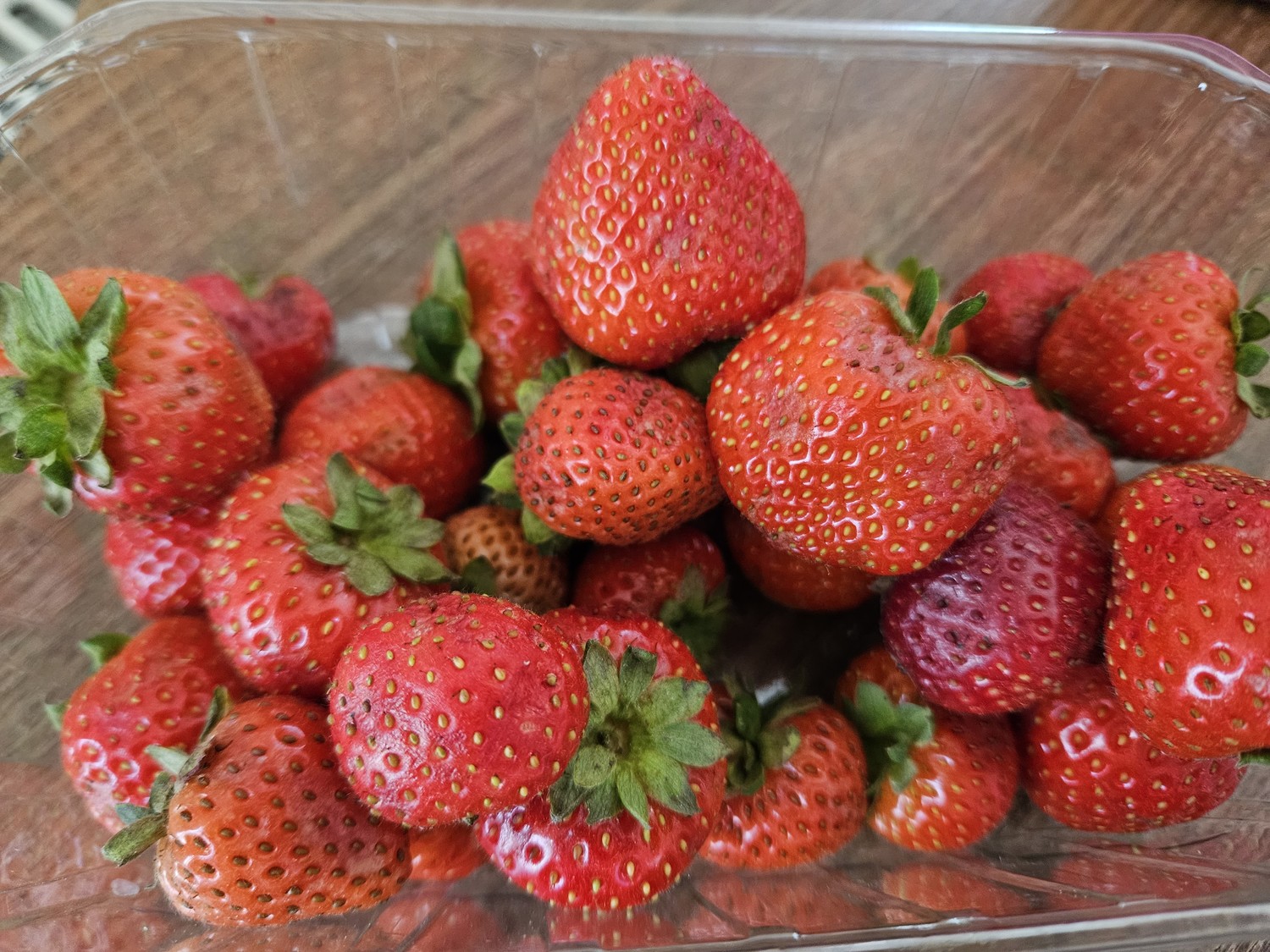
When to Plant Strawberries
The strawberry planting time is divided into spring, summer, and autumn.
- In spring – from the second half of May to the last week of June.
- In summer – from July to mid-August. Choose a cloudy day or evening for planting, avoiding direct sunlight and heat.
- In autumn – at the end of August to the beginning of September.
Best Soil and Location for Strawberries
- Optimal soil acidity for strawberries: 5.3–6.5 pH.
- Suitable soil types for strawberries can be loamy sand, loam, slightly acidic to neutral, humus-rich, loose, and well-draining. The groundwater level should be at least 1 meter below the surface.
- Unsuitable soil types for strawberries: highly acidic (requires liming to improve), heavy clay, peaty soil (can cause Phytophthora disease), and very sandy soil.
- The ideal location for growing strawberries is a well-lit, sunny, open area, preferably facing south.
- Poor locations for planting strawberries are shaded areas; depressions; and windy, damp, low-lying, or waterlogged places where water accumulates. These conditions lead to strawberry rot.
- According to crop rotation principles, strawberries should not be replanted in the same soil for 3–4 years. Preceding crops significantly affect the rotation process. These tables list suitable and unsuitable preceding plants, as well as compatible biological neighbors, for successful strawberry cultivation:
| Suitable Preceding Crops | Unsuitable Preceding Crops | |
| Strawberries |
Lettuce, Carrots, Beets, Radishes, Radish, Peas, Beans, Garlic, Onions, Dill, Parsley, Rapeseed (Canola), Green manures (cover crops) |
Potatoes, Tomatoes, Cucumbers, Cabbages, Raspeberries, Pumpkins, Peppers, Sunflowers, Asters, Gladiolas and other garden flowers. |
| Compatible Neighbors | Incompatable Neigbors | |
| Strawberries | Carrots, Parsley, Spinach, Radishes, Beets, Peas, Beans, Sorrel, Ferns, Peonies, Rhododendrons, Sea buckthorns, Pines. | Wild strawberries, Tomatoes, Potatoes, Raspberries, Sunflowers, Sunchokes, Horseradish, Cabbages, Carnations. |
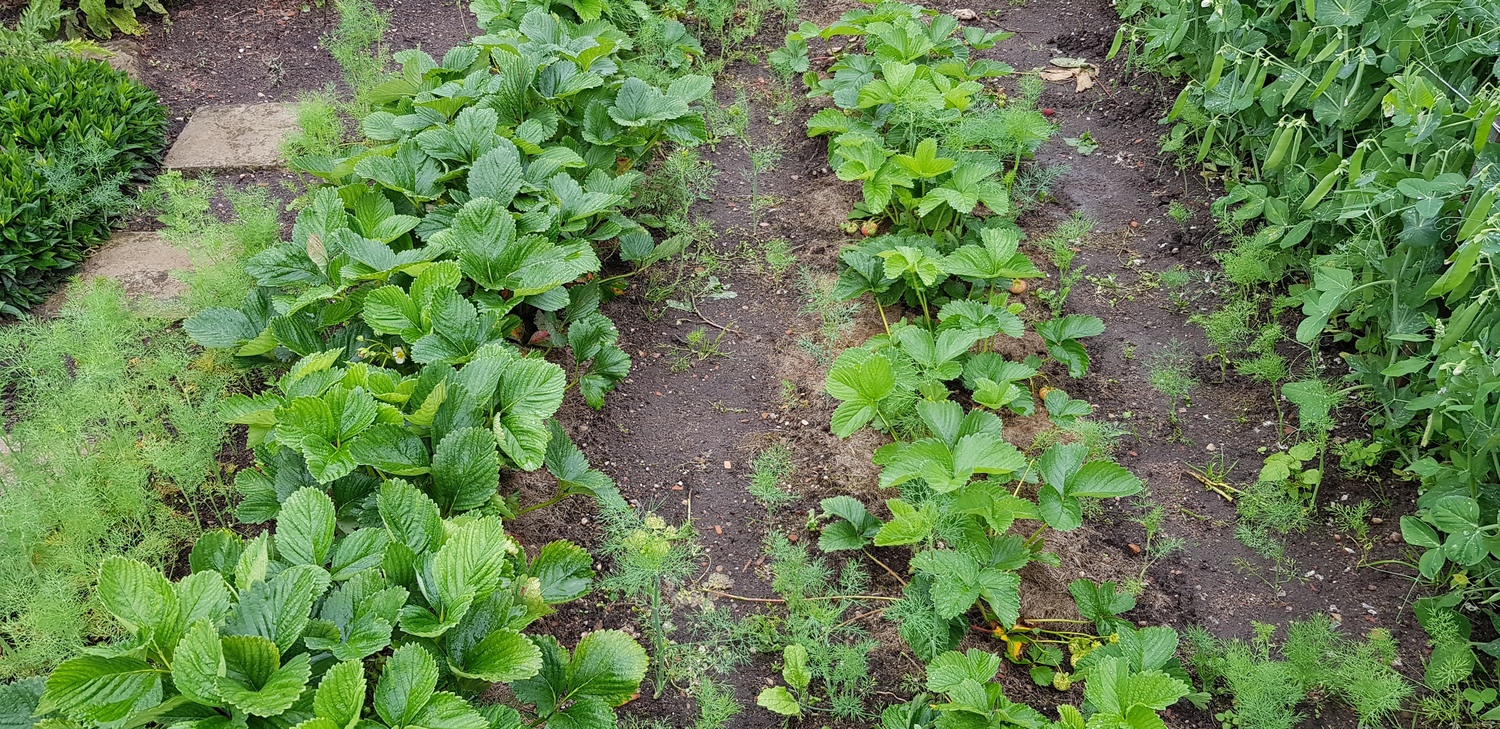
Strawberry Seedlings and Their Preparation
Strawberries are planted with seedlings. Therefore, it is important to choose high-quality and healthy seedlings. Signs of healthy strawberry seedlings include:
- A well-developed root system (at least 7 cm long). Longer roots can be trimmed to 7-10 cm.
- Seedling diameter – at least 5 mm. A larger diameter indicates a healthier, well-developed seedling with plenty of nutrients.
- 2-3 leaves. If there are more leaves, trim them. Seedlings without leaves also establish well.
- The seedlings are free from disease or pest damage.
Strawberry seedlings. “Frozen” strawberry seedlings are prepared in the autumn, sorted, and stored at low temperatures. This is the best way to purchase high-quality seedlings of a good variety and free from diseases. Seedlings are categorised by size (A - A+) and the distance from the mother plant (elite seedlings).
When preparing selected strawberry seedlings for planting, it is very useful to soak their roots in a thick clay slurry (to protect them from drying out). Alternatively, soak them for up to 10 minutes in fungicide solutions.
Soil Preparation for Strawberry Planting
The soil intended for strawberry planting should be dug over in the autumn. If the area is large, cultivation machinery will make the task easier. The benefit of soil tilling lies in the fact that it helps eliminate weeds and underground pests (their larvae and eggs end up on the surface, becoming easy prey for birds and humans).
The soil is dug over and leveled. There should be no holes, bumps, or other irregularities – strawberries grow better on a smooth surface.
The soil is fertilised just before planting, with a preference for phosphorus and potassium fertilisers (double superphosphate – 40 g/m², potassium sulfate – 20 g/m²), avoiding chlorine-based fertilisers and excess nitrogen. The amount of well-rotted cow manure for fertilisation is 6-8 kg/m² (or 8-12 kg/m² for poorer soil). An equivalent amount of compost can be used instead of manure.
Experienced strawberry growers traditionally lay agrotextile (black or white) on the plowed and fertilised soil to prevent new weeds from growing, reduce moisture evaporation, and keep the soil warm.
Then, when it’s time for planting, holes are cut in the film through which the strawberry seedlings will be planted. The distances between the holes should match the planned planting scheme for the strawberries, which is typically 30-35 cm.
According to the same distance scheme, holes 6-8 cm deep are dug for each strawberry seedling.
Just before planting, water is poured into the holes.
Strawberry Planting
The usual spacing of about 30 cm between strawberry plants in a row is the traditional established technique. For strawberries with low growth, the row spacing is 20 cm.
The distance between the rows can vary: traditionally, it is 40 cm, while when using the Frigo strawberry planting technology, the spacing between rows is 25-30 cm.
It is not recommended to plant strawberries too densely – overcrowding can lead to strawberry diseases. Especially for varieties that are susceptible to rot or have lush foliage, they should be planted farther apart, with a spacing of 0.8-1 meter between rows.
Each hole should contain only one strawberry seedling, not 2 or 3. Later, such a “grouped” plant will quickly weaken and deprive neighboring strawberry plants of nutrients.
During strawberry planting, the seedlings should be placed in the holes upright – not horizontally or at an angle. The roots should also be in a vertical position in the hole, not bent but straightened out.
When covering the strawberry seedlings with soil, the root collar should be level with the soil surface. If the collar is above the surface, it will be damaged by frost. However, if the root collar is planted too deep, it becomes susceptible to rot.
It is recommended to mulch the newly planted strawberries immediately with wood chips, which will help prevent weeds and retain moisture for a longer time. Neutral peat can also be used as mulch.
Strawberry Care
Weeds such as bellflowers, dandelions, chamomile, and others quickly grow near strawberries, stealing moisture and nutrients. It is essential to regularly remove these weeds by weeding and loosening the soil between the strawberry plants.
Strawberry Irrigation
Strawberries are sensitive to drought. They require regular watering to ensure healthy growth and fruit development.
The frequency of strawberry irrigation, maintaining an 8-10 day interval under normal weather conditions (when there is no drought or heat):
- 1-2 waterings before flowering;
- 2-3 waterings during fruiting;
- 1-2 waterings after harvest.
Watering rate: 20-30 liters per m². After watering, mulch with dry grass, straw, or wood chips. The strawberry taste is enhanced by mulch made from coniferous needles.
Watering should be done around the strawberry plants, not directly on the plants. The best time for watering is in the evening, avoiding midday heat to prevent wetting the leaves and fruit under the scorching sun. For this reason, drip irrigation is very beneficial.
Strawberry Fertilisation
If the soil was properly fertilised before planting, strawberries growing in the first year may not require additional fertilisation. In other cases, organic and mineral fertilisers are used for strawberry fertilisation.
Organic Fertilisers for Strawberries:
- Cow manure. First, mix the manure with water in equal parts and let it sit for 7 days to create a concentrated manure solution. Then, dilute it with water in a 1:10 ratio and water the soil near the strawberry roots, avoiding contact with the leaves or stems.
- Poultry manure. The solution is prepared in the same way as cow manure. The prepared concentrate is diluted even more, in a 1:20 ratio, to prevent burning the strawberry roots.
Mineral Fertilisers for Strawberries:
- Potassium sulfate (30 g: 10 l of water) – for autumn strawberry fertilisation.
- Potassium nitrate (25 g: 10 l of water) – used in the autumn.
- Calcium nitrate (25 g: 10 l of water) – for strawberry roots. Fertilise only in the spring before flowering; unsuitable for autumn.
- Ammonium nitrate (20 g: 10 l of water) – to be used starting from the second year of strawberry growth in the spring.
- Ammonium sulfate (20 g: 10 l of water and 2 cups of cow manure) – provides additional nutrients to the plants.
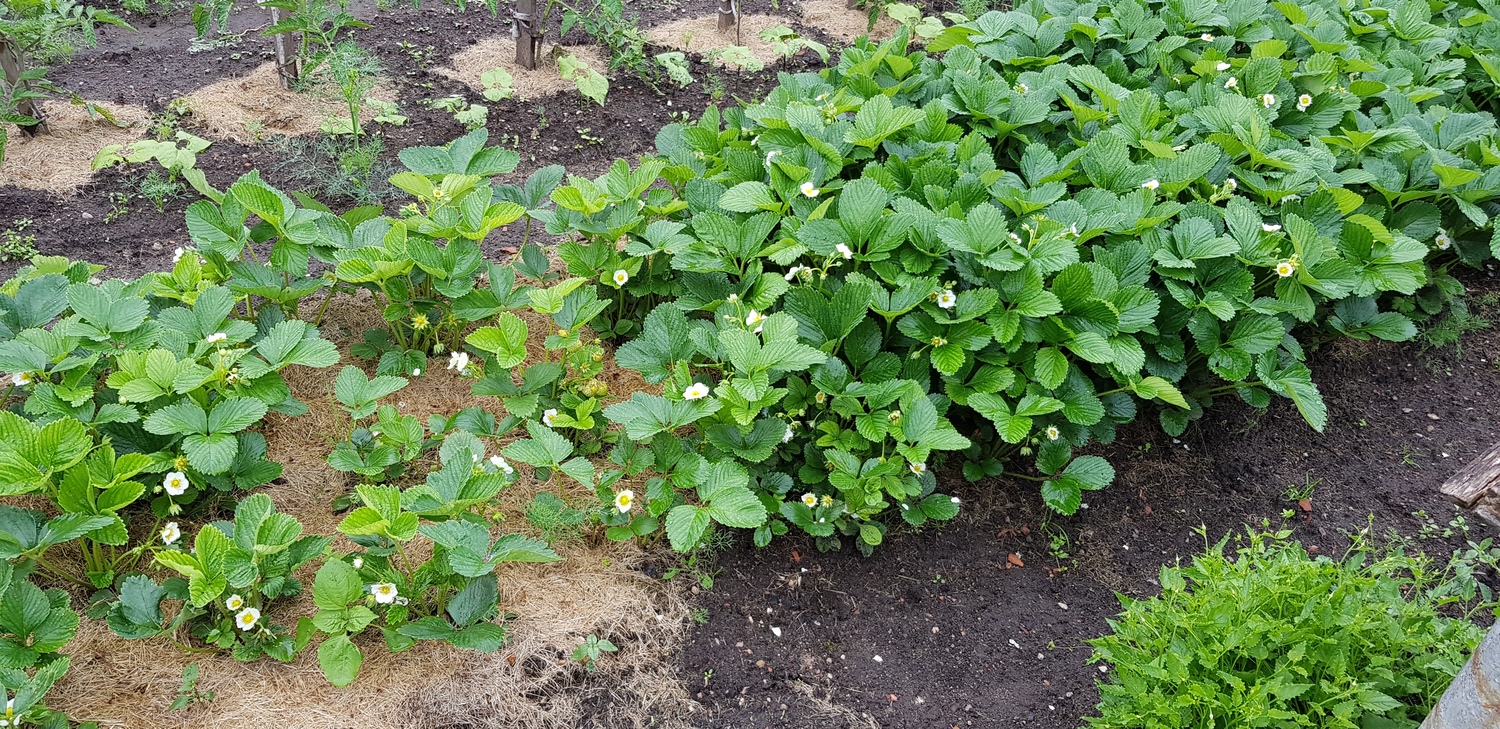
Common Strawberry Diseases
| Disease | Syptoms | Cause | Consequences |
| (Botrytis) Gray Mold | Wilted and faded flowers. Fruit rot, grayish-white fungal growth on the fruit. Leaf wilting. | Excessively wet, rainy weather during flowering and fruiting. Poor air circulation between strawberry plants. Fungicides not applied in time. | Damaged fruit. Loss of part of the harvest. |
| Powdery Mildew | White patches and spots on leaves and fruit. Leaf deformation, curling. | Dry, hot weather during flowering. Susceptible varieties. Lack of light. Fungicides not applied in time. | Damaged leaves and fruit. Partial crop contamination. |
| Angular Leaf Spot | Pale and pink alternating spots on the leaves. | Warm, humid weather during flowering. High air humidity. | Damaged leaves, flowers, and runners. Reduced harvest. |
| Leather Rot | Yellow or purple spots on the fruit. Fruit hardening. | Prolonged rainy weather. Heat. Contaminated soil. Failure to follow crop rotation. Fungicides not applied in time. | Fruit rot. Damaged harvest. |
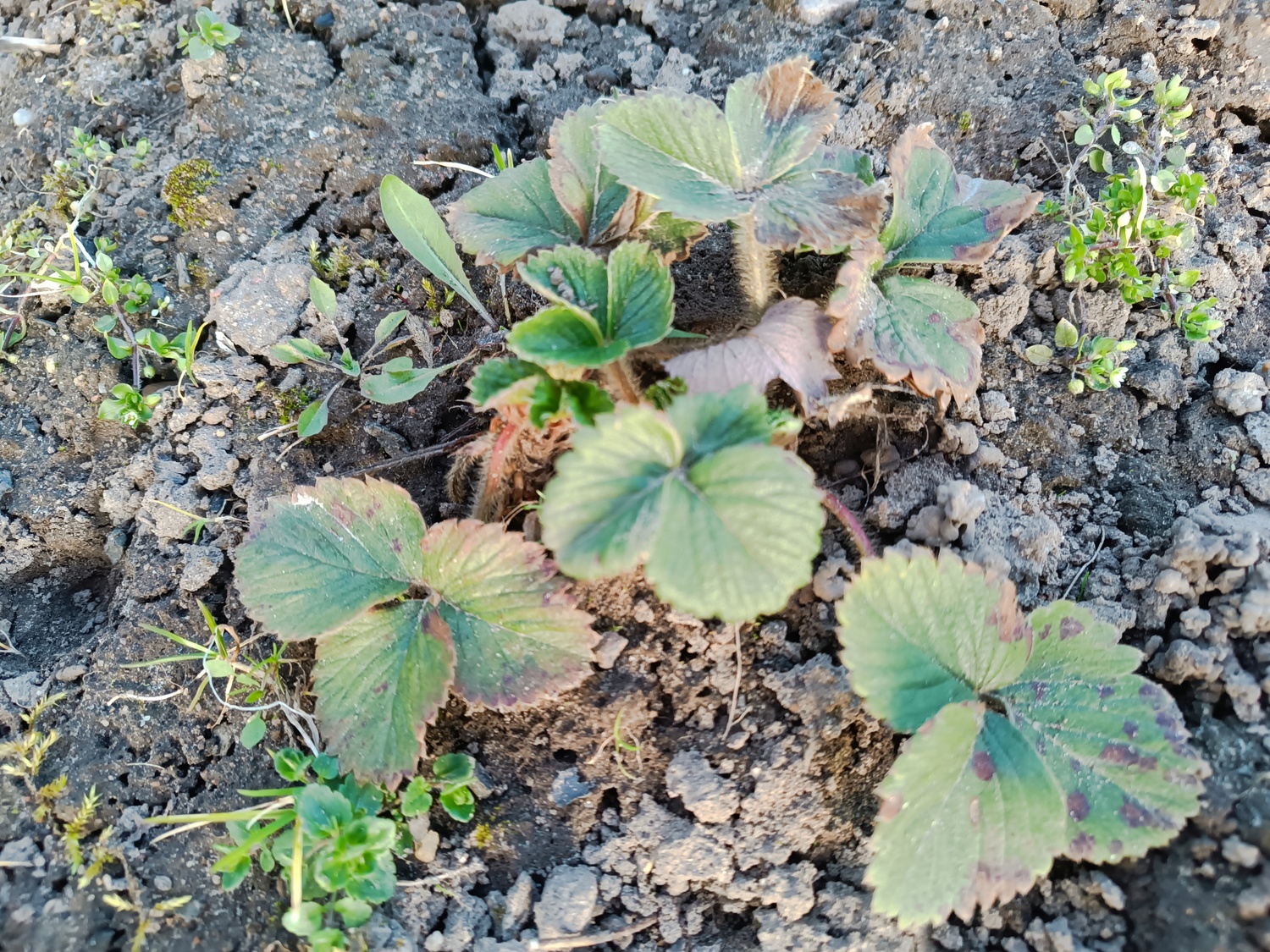
Common Strawberry Pests
| Pest | Causes | Consequences |
|
Spider Mite Wild Strawberry Mite |
Failure to follow crop rotation; susceptible varieties; presence of weeds nearby; contaminated soil; failure to till soil in time. Insecticides not applied in time. |
Leaf drying. Stunting of the strawberry plant. Low yield. |
|
Thrips |
Warm and dry weather during and before flowering. Windy conditions. Weeds nearby. Failure to follow crop rotation; untilled, uncultivated soil. Insecticides not applied in time. |
Disrupted strawberry growth. Plant exhaustion. Low yield. |
| May Beetle | Untilled, uncultivated soil. Failure to follow crop rotation. |
Chewed leaves. Damaged yield. |
| Stink Bug | Weeds nearby. Untilled, uncultivated soil. Insecticides not applied in time. |
Exhaustion of the strawberry plant, growth disturbance. Deformation of fruit buds. Low yield. |
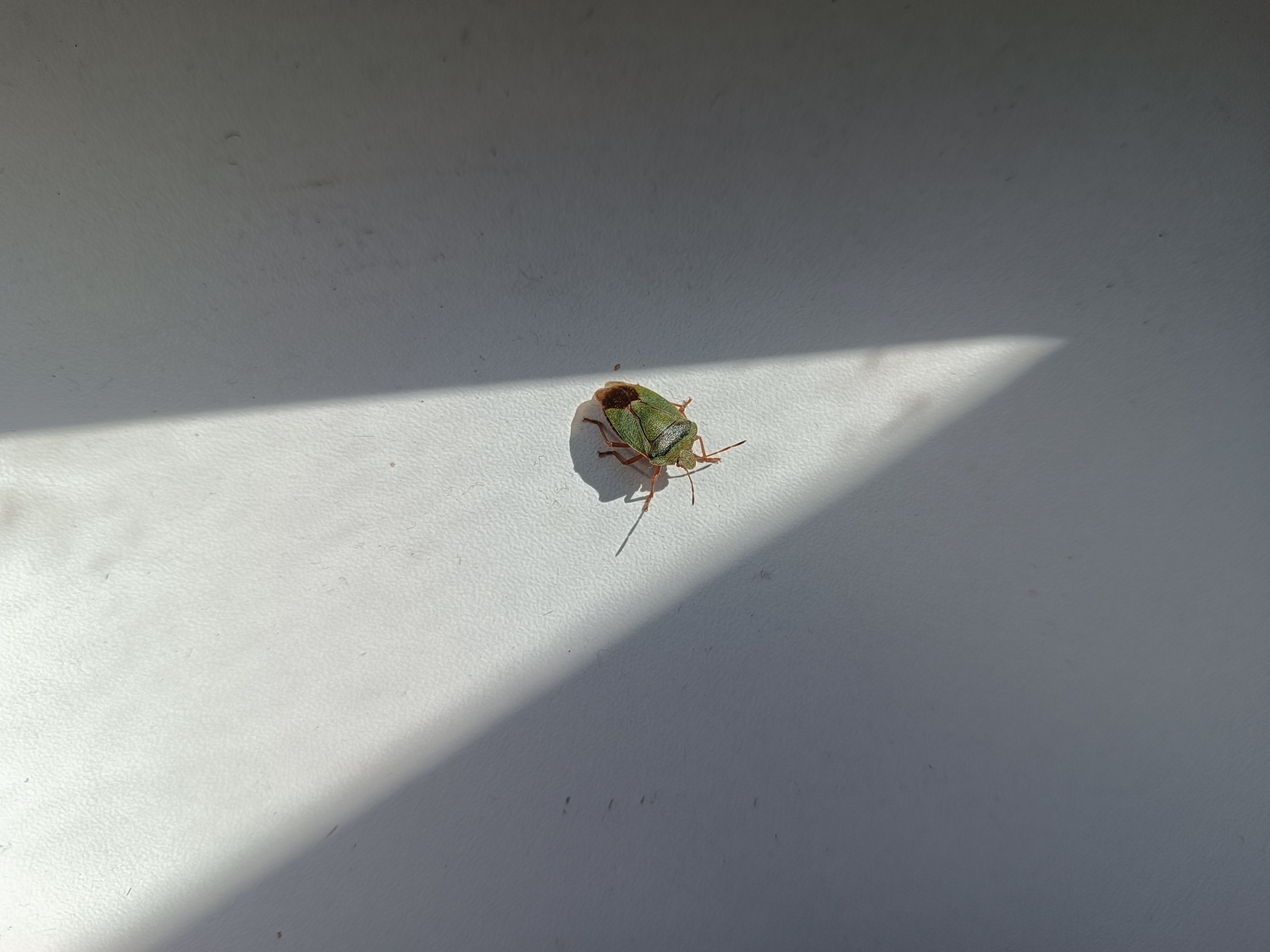
Strawberry Harvesting
A strawberry is considered ripe when it is completely red, with no green tips remaining, is not too soft, and retains its shape well. Only then should it be harvested.
Once the strawberry season begins, they are regularly harvested (once daily). If there are many strawberry beds and the weather is hot, harvesting should be done daily. This is because the fruiting period of these berries is short. Overripe and unharvested strawberries are prone to gray mold.
- Strawberries should be harvested with their stems. This way, the harvested fruit will stay fresh for longer.
- You can pluck the strawberry stems from the plant with your fingers. However, meticulous gardeners prefer to cut the stems with scissors.
- The strawberry stem can be cut very close to the berry, but it's better to leave a longer stem of about 1-1.5 cm. This makes it easier to handle the strawberries by their "tails," and they will stay dry and fresh for a longer time.
Harvested strawberries should be placed in wicker baskets, wooden crates, or cardboard boxes for long-term storage, as these materials allow for proper ventilation. Wood and cardboard are breathable, helping to maintain the freshness of the strawberries.
Metal buckets and containers are unsuitable for long-term storage because they lack ventilation holes, causing the strawberries to spoil quickly and become squashed. Plastic containers are also not recommended as they do not allow the strawberries to breathe, leading to rapid spoilage.
It is better to store the strawberry harvest in a refrigerator, freezer, or a cool, well-ventilated cellar.
In one day, strawberries in the refrigerator will not lose their nutritional properties. However, after the second day of storage, the levels of vitamin C and sugar in the harvested strawberries will significantly decrease.
Strawberry Varieties
The abundance of strawberry varieties differs in terms of earliness and lateness, resistance to rot, diseases, frost, yield, berry size, and taste. There are also remontant strawberries that bear fruit multiple times during the summer season.
